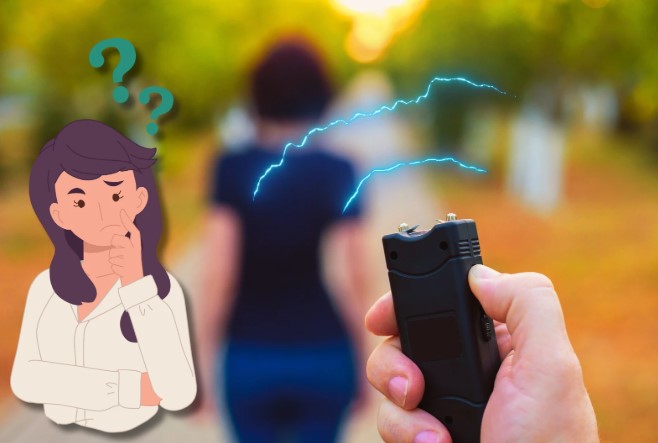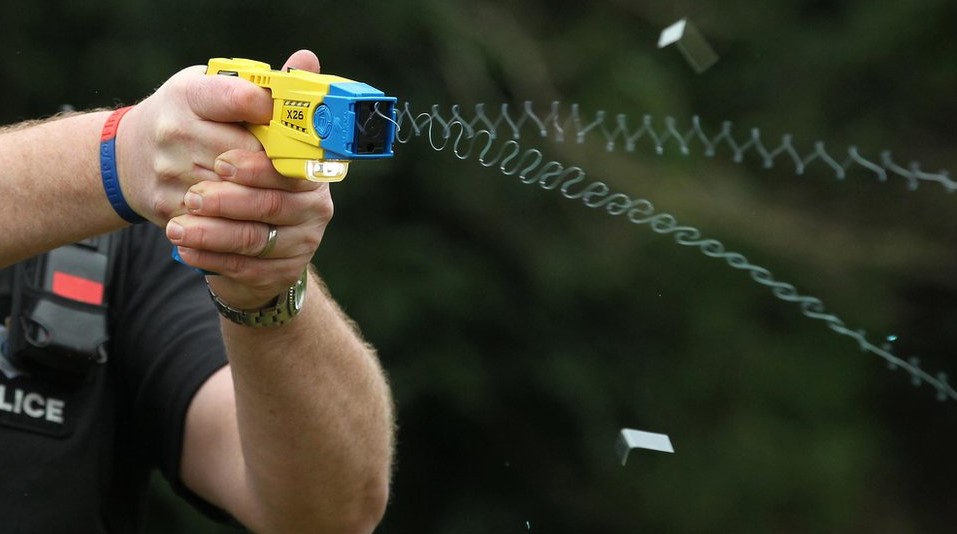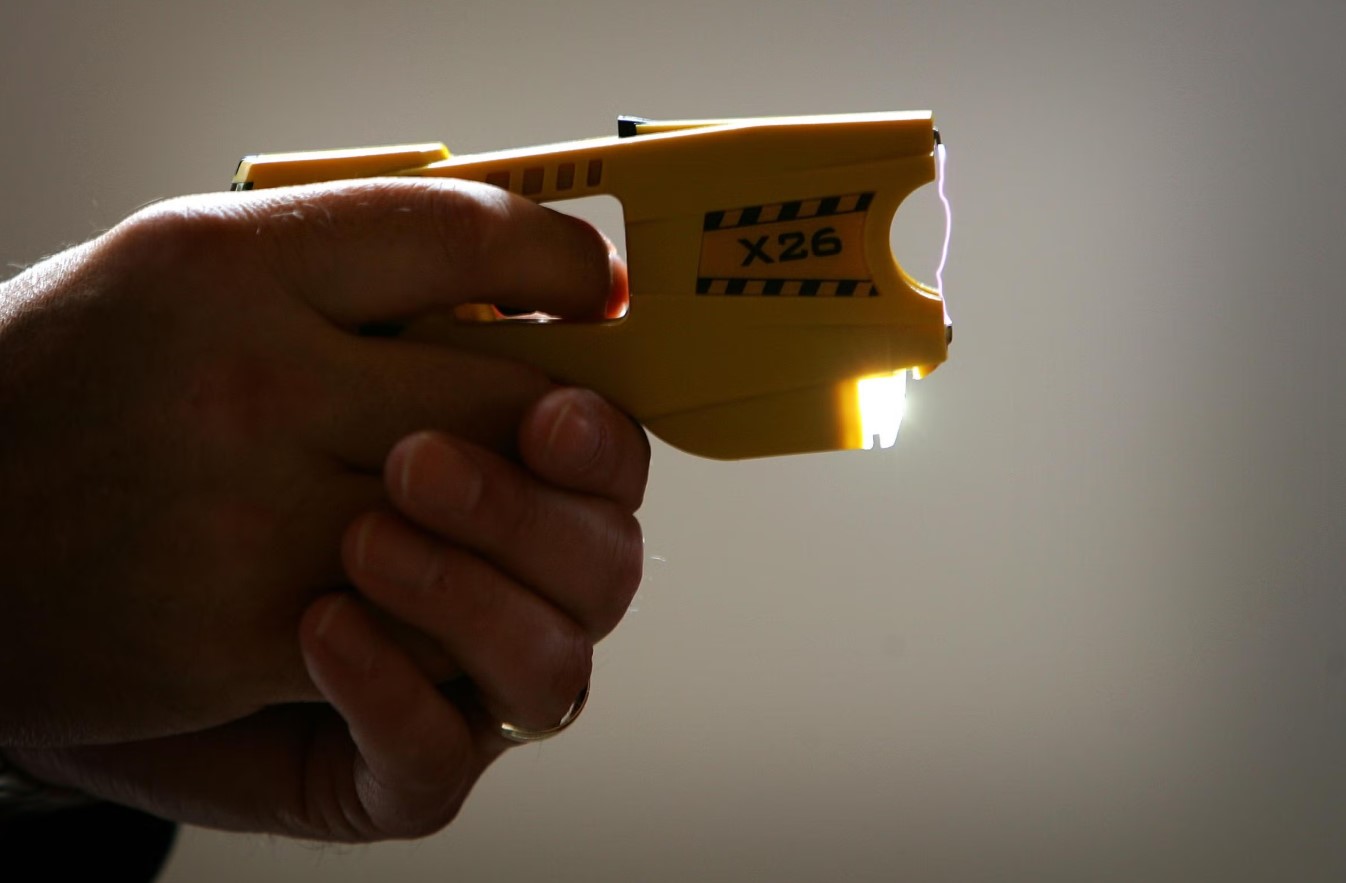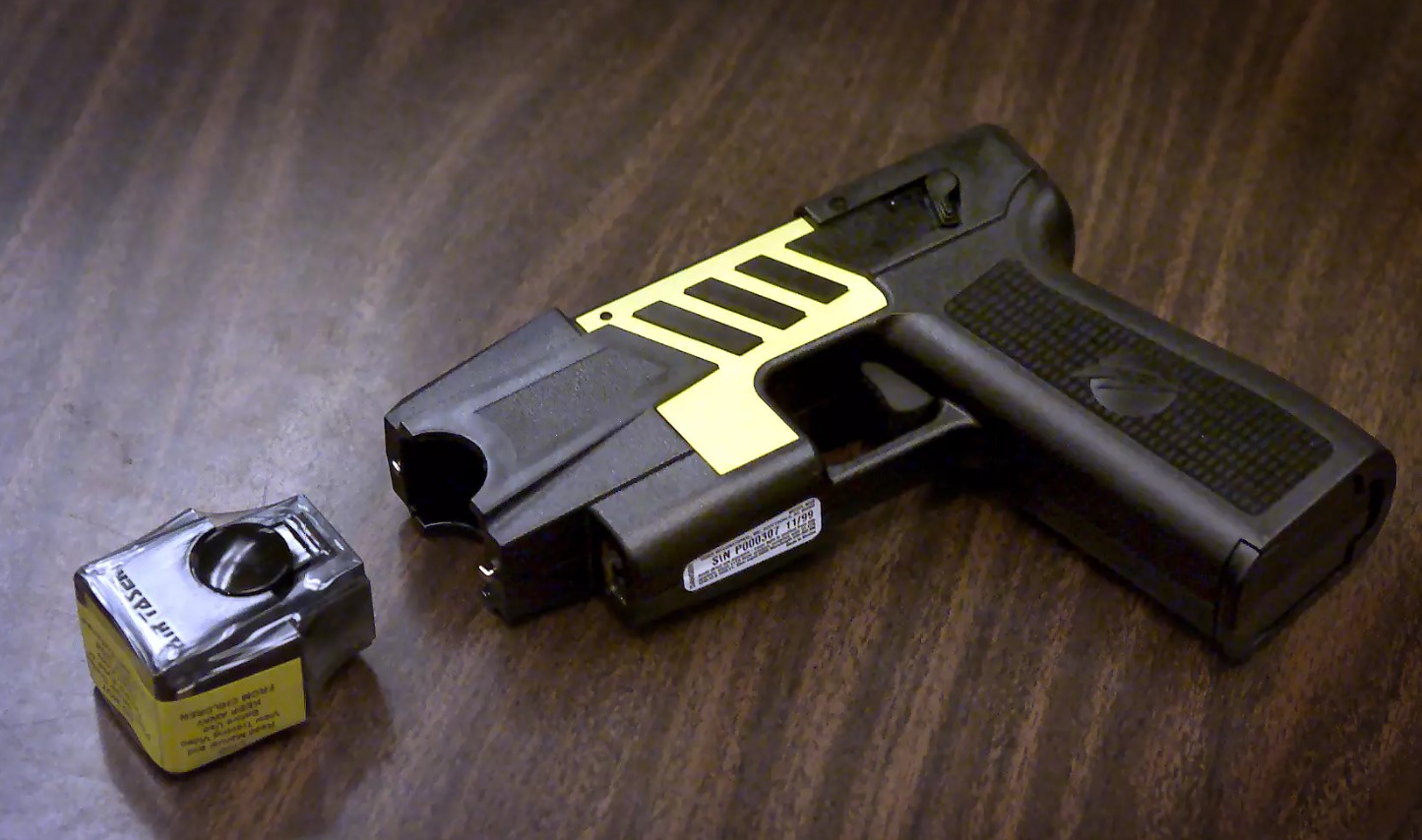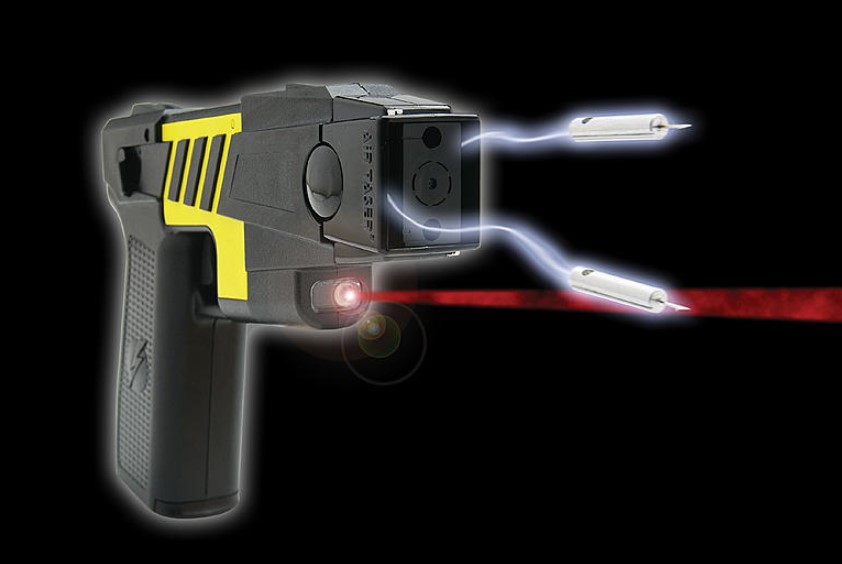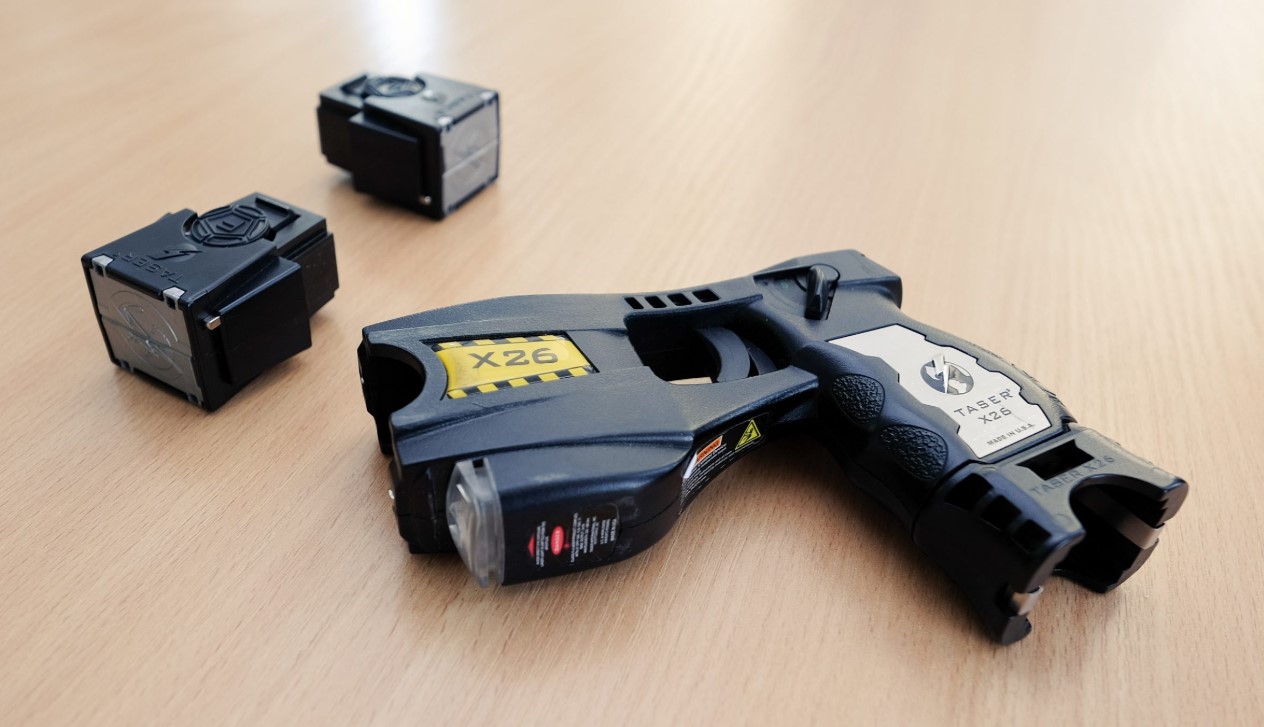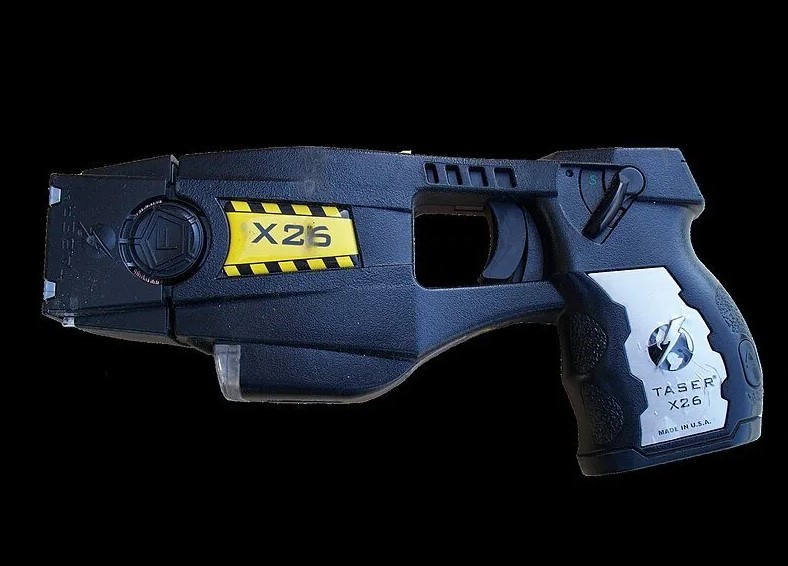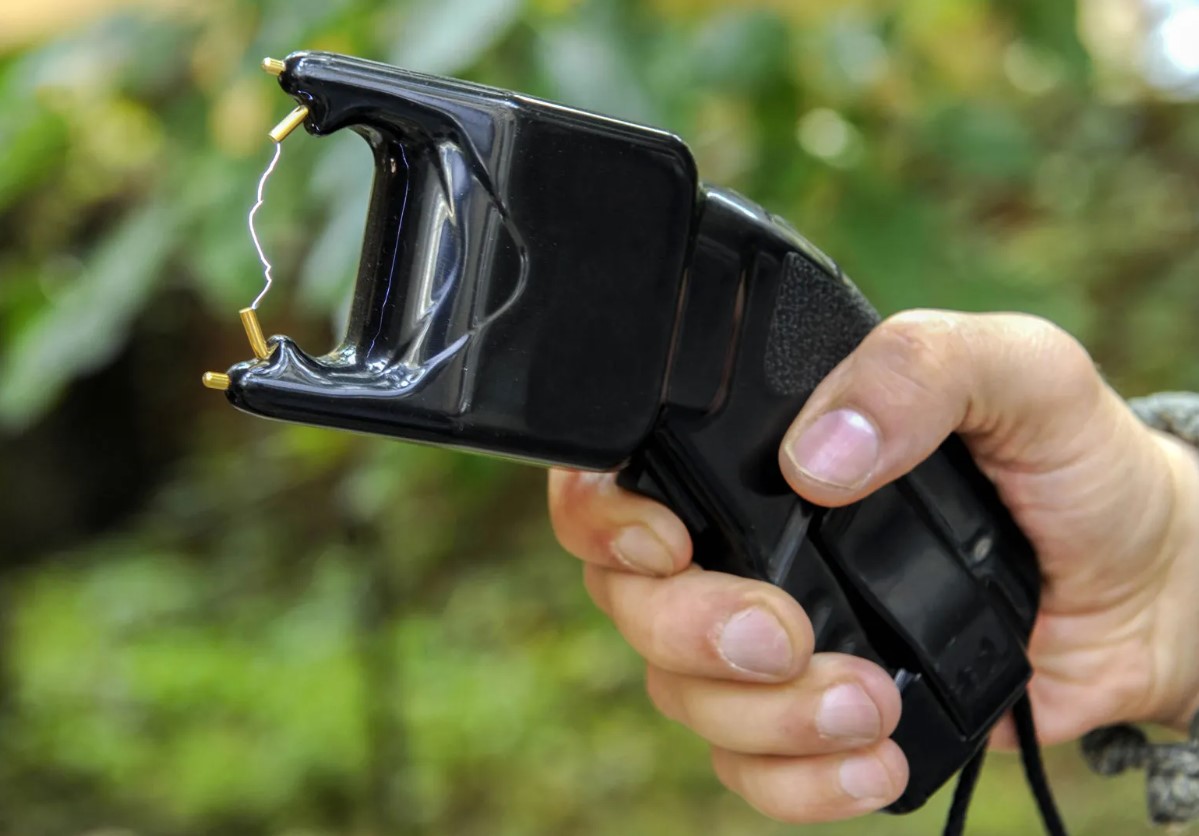In the United Kingdom, the legality of Tasers is a subject of significant importance, intertwining aspects of public safety, law enforcement protocols, and individual rights. This comprehensive analysis delves into the intricacies of Taser legality in the UK, examining statutory regulations, law enforcement usage, legal implications, and recent case studies to provide a thorough understanding of this critical issue. Follow: self-defensetools.com!
Understanding Tasers: Definition and Functionality
A Taser, also known as a Conducted Energy Device (CED), is a type of electroshock weapon designed to incapacitate a person temporarily through the delivery of an electric current. Developed by Taser International, an American company, these devices are intended to subdue individuals by disrupting voluntary control of muscles, thereby immobilizing them. Tasers can be deployed in two primary modes:
- Probe Mode: This involves firing two small dart-like electrodes connected to the device by conductive wires. Upon contact with the target, an electric charge is transmitted, causing neuromuscular incapacitation.
- Drive-Stun Mode: In this mode, the Taser is pressed directly against the individual’s body, delivering a localized electric shock without the use of projectiles.
The design and functionality of Tasers aim to provide law enforcement officers with a less-lethal option to manage potentially dangerous situations, reducing the reliance on firearms.
Legal Classification of Tasers in the UK
In the UK, Tasers are classified as prohibited weapons under Section 5 of the Firearms Act 1968. This classification deems them as firearms, making it an offence for civilians to possess, purchase, acquire, sell, or transfer such devices without the authority of the Secretary of State. The penalties for unauthorized possession are severe, reflecting the potential risks associated with these devices.
According to the House of Commons Library, “It is an offence punishable by up to 10 years imprisonment to possess, purchase, acquire, sell or transfer the weapon without the authority of the Secretary of State.”
This stringent regulation underscores the UK’s commitment to controlling the distribution and use of devices capable of inflicting significant harm.
Exemptions for Law Enforcement
While civilian possession of Tasers is prohibited, certain exemptions exist for law enforcement personnel. Police officers, under specific circumstances, are authorized to carry and use Tasers as part of their operational duties. This authorization is accompanied by rigorous training and strict guidelines to ensure responsible usage.
The College of Policing outlines that “The CEDs approved and currently available for use by specially trained police officers in the UK are: TASER X26e™ (more commonly referred to as a TASER® X26™).”
The deployment of Tasers by police officers is intended to provide a less-lethal option in situations where there is a risk of serious harm, thereby enhancing public and officer safety.
Legal Implications of Unauthorized Possession
Unauthorized possession or use of a Taser by civilians carries significant legal consequences. The severity of the penalty reflects the potential danger posed by these devices.
As noted by the House of Commons Library, “It is an offence punishable by up to 10 years imprisonment to possess, purchase, acquire, sell or transfer the weapon without the authority of the Secretary of State.”
Furthermore, if a Taser is disguised as another object, such as a torch, the offence carries a minimum term of imprisonment of 5 years.
These stringent penalties underscore the UK’s commitment to preventing unauthorized access to potentially dangerous weapons.
Recent Legal Cases Involving Taser Use
Several legal cases have highlighted the complexities surrounding Taser use in the UK, particularly concerning law enforcement practices.
- Afriyie v Commissioner of Police for the City of London: In this case, the Court of Appeal ruled that the use of a Taser by a police officer during an arrest was objectively unreasonable. The individual, Edwin Afriyie, was awarded damages as a result.
- Metropolitan Police Officer Misconduct: A Metropolitan Police officer was found guilty of gross misconduct after pressing a Taser to a 16-year-old’s neck during a stop and search. The officer received a final warning but was not dismissed.
These cases underscore the importance of proportionality and accountability in Taser deployment by law enforcement officers.

Public Perception and Debate
The use of Tasers by law enforcement has been a subject of public debate in the UK. Advocates argue that Tasers provide officers with a valuable tool to manage dangerous situations without resorting to lethal force. However, concerns have been raised regarding potential misuse, the risk of serious injury or death, and the disproportionate impact on certain communities.
Incidents involving the use of Tasers on minors and individuals with mental health issues have particularly fueled discussions about the necessity of stringent guidelines and oversight. The balance between ensuring public safety and protecting individual rights remains a focal point in the ongoing discourse surrounding Taser use in the UK.
Conclusion
In conclusion, Tasers are classified as prohibited weapons in the UK, with strict regulations governing their possession and use. While law enforcement officers are authorized to use Tasers under specific circumstances, civilians are prohibited from owning or using them. Unauthorized possession can lead to severe legal penalties, including imprisonment and fines. Ongoing public debate highlights the need for careful consideration of the balance between public safety and individual rights in the context of Taser use.
Related Posts: Navigating the Legal Landscape of Tasers and Stun Guns in New York

